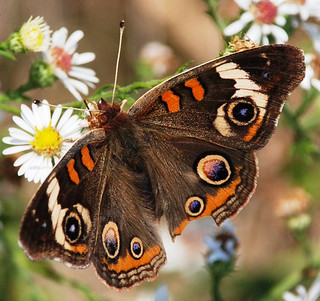My nine year old daughter went a bit crazy on the butterflies and moths this Summer. It was great to see so many of them and herself and her friend spent hours catching them, minding them in the insect observer they have, identifying which type they were and eventually setting them free. To my knowledge none of them were harmed in the process and along with plenty of fresh air she also got to learn a lot about nature!
So here are some differences between butterflies and moths….
 |
| Clubbed antennae on buckeye butterfly photo credit: jjjj56cp via photopin cc |
Butterflies fold their wings together behind their back when at rest while moths tend to place their wings down their backs.
| Wings folded back along the body of a tiger moth |
 |
| Wings folded together on a Queen butterfly photo credit: jjjj56cp via photopin cc |
The forewing and hindwing of a moth are attached together by a filament called a frenulum. This allows the wings to move together in flight. Butterflies do not have frenulums.
Moths tend to have hairy, plump bodies while most butterflies have more smooth, slim bodies.
An exception to the rule…
There are, as I mentioned, plenty of exceptions to all these rules…. the Madagascar sunset moth (Chrysiridia rhipheus) is a good example. The bright colours of this day flying moth are more akin to the colours we expect from a butterfly rather than a moth! As always, Mother Nature likes to keep us on our toes!
| The Madagascar sunset moth Image credit: Anaxibia via Wikimedia Commons |

